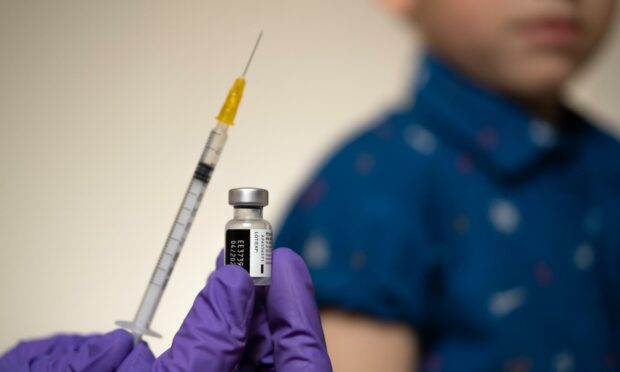With the US on the verge of vaccinating children under five, should Scotland follow the same route?
This week, Pfizer and its German pharmaceutical partner BioNTech asked US officials to authorize emergency use of their Covid-19 vaccine for children aged six months to five years.
The answer could come before the end of February.
In the UK, the JCVI currently recommends two smaller doses of the Pfizer-BioNTech vaccine for vulnerable children in the five-12 age range.
The latest NHS inform guidance does not include any additional guidance for younger children.
But do you think it’s time for Scotland to consider making the vaccine available to all ages? Let us know in our poll below.
What is the current situation?
A breakdown of recent Covid-19 case numbers by age group in Scotland shows children under the age of 15 contracting more cases than older kids.
The last death recorded among children in the under-14 age range was in March 2021.
In its most recent update last December, the Joint Committee on Vaccination and Immunisation recommended new advice for children ages five-11.
Any children in this age group “in a clinical risk group or who are a household contact of someone who is immunosuppressed” can get two small doses of the Pfizer-BioNTech vaccine.
The JCVI has based the effectiveness and safety of the vaccine partly on clinical trials and partly on data from the US. Children ages five-11 are the youngest mentioned in current JCVI and NHS inform guidance.
What could change in the US?
This week, Pfizer-BioNTech took a step towards offering the vaccine to the last unvaccinated age group.
Although they are still gathering data, Pfizer-BioNTech applied this week for emergency-use authorisation from the Food and Drug Administration.
The FDA votes on the issue on February 15. If they approve the emergency use, then another agency needs to sign off before it becomes available to the public.
And if officials approve the emergency use, the vaccine could be available to young children by March.
Is it time for Scotland to start considering vaccinating the very young?
Although NHS inform reports that Covid-19 typically causes minor illness in children, the vaccine rollout has continued to expand in order to slow the spread in communities.
Do you think Scotland should consider vaccinating the youngest?
Read more from the Schools & Family team
Covid in schools: New absence rates show another turn
‘We want school to be fun again’: A day in a teacher’s life during a pandemic
